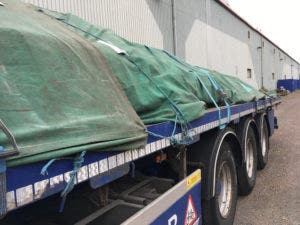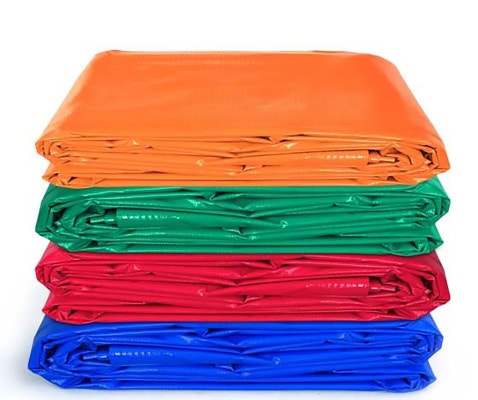Do Tarp Colors Mean Something, or is it Just for Show?
When you're asked to picture a tarp in your mind, it's probably a blue one, right? After all, that's the most ubiquitous color of tarp. It's the one we see pinned down on roofs while work is being done, or heaped over stacks of crops in farm fields when we're driving along the highway. But tarps do come in all sorts of colors. And it does leave some people wonder whether certain colored tarps are coded in a particular way. Do tarp colors actually signify anything?
You won't really like the short answer: yes and no. The slightly more detailed answer of "sometimes yes and sometimes no, it depends really" isn't very helpful, either.
Some companies that produce tarps do use color coding; different colored tarps will signify different things. The problem is that most of those companies use their own internal color coding systems. One company might sell a red colored tarp aimed toward covering dangerous materials, while another might simply say their red colored tarps are meant to increase visibility. Another might just sell red tarps because they like the color red.
What about the tarps for sale here at Tent and Table? Most of our customers work in the event and party rental spaces, so we offer heavy duty, commercial grade tarps in a wide variety of colors and styles to better suit the needs of our clients. We don't sell orange colored tarps because orange means something in particular. We sell orange colored tarps so our clientele can better use those tarps in conjunction with bounce houses, inflatable water slides, inflatable obstacle courses, etc.
When Colored Tarps Do Mean Something, What Do They Mean?
There's no uniform industry standard for tarp colors. There aren't any industry group rules or government regulations dictating what different tarp colors need to represent. But as a general rule, different tarp colors tend to signify the same broad standards for most companies. We just want to point out again that each company will be slightly different, and some companies (like ours) don't have a color coding policy at all.
 Blue, green and brown tarps are usually general purpose tarps, meant for consumer and light industrial work. They're popular with contractors, construction workers, roofers, farmers, and landscapers. Blue tarps are easily the most popular form of tarp and the most easily found.
Blue, green and brown tarps are usually general purpose tarps, meant for consumer and light industrial work. They're popular with contractors, construction workers, roofers, farmers, and landscapers. Blue tarps are easily the most popular form of tarp and the most easily found.- Yellow, orange, and red tarps are often used to visually prioritize the materials a work crew is using, or to add visibility to dangerous areas. You might use a red tarp to warn people there's hard materials underneath it, so no one accidentally hits it with a truck. Or you might use red to mean "phase three materials," after you've already gone through yellow phase one and orange phase two materials, just as an example.
- White and silver tarps are used for offering shade from the sun. They're often used as makeshift tent canopies, too. These colored tarps typically reflect sunlight rather than absorbing it. White is the best color tarp to reflect heat.
- Black and dark gray tarps absorb sunlight, rather than reflect it. That makes them idea for applications where you need to keep objects cool, without snow-blinding everyone looking at the outside of the tarp. Some companies also make their darkest tarps their heaviest duty offerings.
[product ids="4332,4319,4320,5849"]
What Color Tarp Should You Get?
The tarps for sale here at Tent and Table come in a wide assortment of colors to suit your needs. They don't conform to some mysterious set of rules only a tiny cabal of industry leaders know about. We want you to find a great, high quality tent that color coordinates easily with your other rental equipment, so we keep things simple here.

Are orange colored tarps better or worse than blue tarps? Not usually. Each manufacturer is different, and you'll want to check with them. But as a general rule, your tarp's color doesn't really matter. And for most applications, any old tarp you choose will probably work fine. If you're unsure, just ask the manufacturer, or search their website to learn more.
So, are colored tarps special? Do tarp colors actually mean anything? It all depends on the manufacturer. Some companies do color code their tarps, and others don't.


